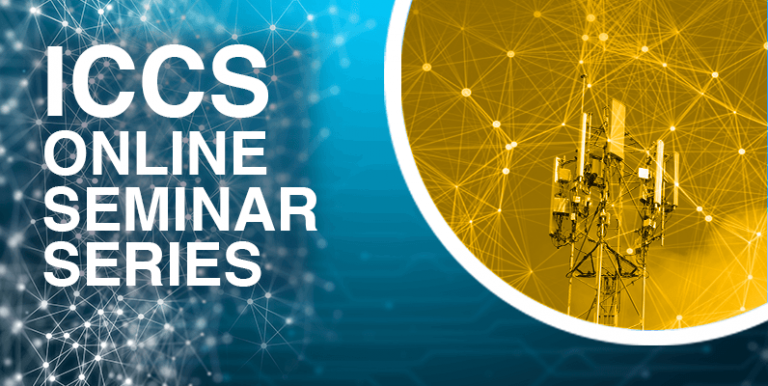Online Seminar | Challenges in high data rate wireless communication at millimeter waves
12 May 2021, 11:30 am–12:30 pm

Professor of High Speed Electronics at Chalmers University, Herbert Zirath, will provide this seminar exploring challenges in engineering high data rate wireless communication set to exploit frequencies above 100GHz
This event is free.
Event Information
Open to
- All | UCL staff | UCL students
Availability
- Yes
Cost
- Free
Organiser
-
Robert Thompson – Institute of Communications and Connected Systems
Challenges in high data rate wireless communication at millimeter waves; beyond 100 Gbps
The transmission rate of wireless data in the mobile networks is doubling every year due to the increased usage of mobile multimedia services like streaming video, music, television, data transfer in smartphones and laptop-computers etc. This tendency will require continuously improved telecom infrastructure regarding both base-stations and the backhaul communication links. Today, the E-band (71-76, 81-86, 92-95 GHz) is employed increasingly in the networks, allowing multi Gbps data rate. In a near future however, the E-band will be crowded, and novel, higher frequency bands can to be employed as well. Several hundred Gigahertz bandwidth is available for new communication and sensing applications just waiting to be exploited at frequencies above 100 GHz. Until now, components for making such ‘THz-systems’ have been too expensive, too bulky, too power hungry and nonsufficient in terms of generating enough power for communication systems. With newly developed RFIC-processes, it is now possible to design multifunctional integrated circuits, realizing a full ‘frontend on a chip’ at frequencies well beyond 100 GHz. Recent reThe transmission rate of wireless data in the mobile networks is doubling every year due to the increased usage of mobile multimedia services like streaming video, music, television, data transfer in smartphones and laptop-computers etc. This tendency will require continuously improved telecom infrastructure regarding both base-stations and the backhaul communication links. Today, the E-band (71-76, 81-86, 92-95 GHz) is employed increasingly in the networks, allowing multi Gbps data rate. In a near future however, the E-band will be crowded, and novel, higher frequency bands can to be employed as well. Several hundred Gigahertz bandwidth is available for new communication and sensing applications just waiting to be exploited at frequencies above 100 GHz. Until now, components for making such ‘THz-systems’ have been too expensive, too bulky, too power hungry and nonsufficient in terms of generating enough power for communication systems. With newly developed RFIC-processes, it is now possible to design multifunctional integrated circuits, realizing a full ‘frontend on a chip’ at frequencies well beyond 100 GHz. Recent results from ongoing projects aiming at enabling new applications for next generation mobile infrastructure, 6G, and imaging, up to 340 GHz will be reported. So far, critical building blocks such as LNA, PA, VCO, modulator and demodulator, frequency multiplier, power detector and mixer have recently been developed, and results will be reported. Multifunction front-end circuits such as complete receive and transmit RFICs, mixed signal designs for co-integrated baseband/frontend ICs, and radiometer ICs have also been developed and will be reported as well, including the newly developed D-band frontend chipset demonstrating state-of-the-art bitrate of beyond 40 Gbps.sults from ongoing projects aiming at enabling new applications for next generation mobile infrastructure, 6G, and imaging, up to 340 GHz will be reported. So far, critical building blocks such as LNA, PA, VCO, modulator and demodulator, frequency multiplier, power detector and mixer have recently been developed, and results will be reported. Multifunction front-end circuits such as complete receive and transmit RFICs, mixed signal designs for co-integrated baseband/frontend ICs, and radiometer ICs have also been developed and will be reported as well, including the newly developed D-band frontend chipset demonstrating state-of-the-art bitrate of beyond 40 Gbps.
ICCS Chair
This session will be chaired by: Izzat Darwazeh
Attending the seminar
The Seminar will be held on the Zoom platform. Details of how to access Zoom can be found on their website.
Please click this URL to join. Zoom Webinar
Webinar ID: 931 8976 4051
Password: Will be distributed to ICCS members, others are welcome to join and the password can be requested by email.
About the Speaker
Herbert Zirath
Professor in High Speed Electronics at Chalmers University
He is, since 1996, Professor in High Speed Electronics at the Department of Microtechnology and Nanoscience, MC2, at Chalmers University. His main research interests include MMIC designs for wireless communication and sensor applications based on III-V, III-N, Graphene, and silicon devices. He is author/co-author of more than 600 refereed journal/conference papers, h-index of 45, and holds 5 patents. He is research fellow at Ericsson AB, leading the development of a D-band (110-170 GHz) chipset for high data rate wireless communication. He is a co-founder of Gotmic AB, a company developing highly integrated frontend MMIC chip-sets for 60 GHz and E-band wireless communication.
More about Herbert Zirath Close
Close

